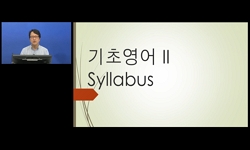사극이란 역사의 내용을 드라마의 형식으로 재현하는 장르다. 역사가 사실인 반면, 드라마는 허구다. 이런 사극의 이중적 정체성이 사극을 어떻게 볼 것인가의 문제를 낳는다. 사극을 보는 ...
http://chineseinput.net/에서 pinyin(병음)방식으로 중국어를 변환할 수 있습니다.
변환된 중국어를 복사하여 사용하시면 됩니다.
- 中文 을 입력하시려면 zhongwen을 입력하시고 space를누르시면됩니다.
- 北京 을 입력하시려면 beijing을 입력하시고 space를 누르시면 됩니다.

사극을 어떻게 볼 것인가 = How to view the Historical Drama: The Historical Drama as a ‘Dreaming History’
한글로보기https://www.riss.kr/link?id=A102640725
- 저자
- 발행기관
- 학술지명
- 권호사항
-
발행연도
2016
-
작성언어
Korean
-
주제어
사극 ; 팩션사극 ; 픽션사극 ; 꿈꾸는 역사 ; 지나간 미래 ; 포스트-트루스 ; 히스토리아 ; 쿠오바디스 ; Historical drama ; Faction historical drama ; Fiction historical drama ; Dreaming history ; Past future ; Post-truth ; Historia ; Quovadis
-
KDC
001
-
등재정보
KCI등재
-
자료형태
학술저널
- 발행기관 URL
-
수록면
9-22(14쪽)
-
KCI 피인용횟수
7
- DOI식별코드
- 제공처
-
0
상세조회 -
0
다운로드
부가정보
국문 초록 (Abstract)
현실과 꿈의 두 세계를 어떻게 접합하면서 사느냐에 따라 인간은 세 종류의 현실을 산다. 첫 번째는 실제 현실만을 진정한 삶의 현장이라고 믿으며 사는 방식이다. 두 번째는 꿈이라는 목표를 갖고 현실을 사는 사람이 사는 증강현실이다. 세 번째는 현실에서 벗어나 꿈속의 가상현실에 사는 삶이다. 이 세 유형에 부응하여 역사적 재현을 현실과 꿈의 두 세계의 접합으로 하는 사극도 정통사극, 팩션사극, 픽션사극으로 구분할 수 있다. 이 같은 세 유형으로 사극이 분화한 것은 디지털 시대에서 인간 삶의 공간이 가상세계로 확장하고 존재방식이 변화한 것과 연관된다.
앞으로 다가올 인공지능 시대에서 인간에게 중요한 것은 지식과 지능보다는 상상력과 감성이다. 모든 것을 디지털 데이터로 전환시킬 수 있는 시대에서 기억의 반대는 망각이 아니라 상상이다. 앞으로 인류는 한 번도 가지 않은 길을 가야한다. 과거의 인류가 걸어왔던 발자국을 통해 미래 나아갈 길을 모색할 수 없다는 것이 오늘날 역사학이 직면한 근본적 한계다.
본 에세이는 인공지능 시대 역사학의 위기를 극복해야 한다는 문제의식으로 역사학과 사극의 관계를 보는 인식의 전환을 제안한다. 현실의 역사를 탐구하는 역사학보다는 과거를 살았던 사람들에게 있었던 ‘지나간 미래’를 이야기하는 사극의 문법에 입각해서 생각할 때, 인공지능 시대 “Historia, Quovadis?”에 대한 의미 있는 답을 구할 수 있다.
사극이란 역사의 내용을 드라마의 형식으로 재현하는 장르다. 역사가 사실인 반면, 드라마는 허구다. 이런 사극의 이중적 정체성이 사극을 어떻게 볼 것인가의 문제를 낳는다. 사극을 보는 두 가지 시각이 있다. 첫 번째는 역사와 사극을 트루스(truth) vs. ‘포스트 트루스(Post-truth)’ 대립의 문법으로 보는 방식이다. 이 문법에 따르면, 사극은 역사적 사실을 왜곡하는 역사감정을 유발한다는 부정적인 평가를 받는다. 두 번째는 역사학과 사극의 관계를 현실과 꿈이라는 인간 삶의 두 측면과 연관해서 이해하는 방식이다.
현실과 꿈의 두 세계를 어떻게 접합하면서 사느냐에 따라 인간은 세 종류의 현실을 산다. 첫 번째는 실제 현실만을 진정한 삶의 현장이라고 믿으며 사는 방식이다. 두 번째는 꿈이라는 목표를 갖고 현실을 사는 사람이 사는 증강현실이다. 세 번째는 현실에서 벗어나 꿈속의 가상현실에 사는 삶이다. 이 세 유형에 부응하여 역사적 재현을 현실과 꿈의 두 세계의 접합으로 하는 사극도 정통사극, 팩션사극, 픽션사극으로 구분할 수 있다. 이 같은 세 유형으로 사극이 분화한 것은 디지털 시대에서 인간 삶의 공간이 가상세계로 확장하고 존재방식이 변화한 것과 연관된다.
앞으로 다가올 인공지능 시대에서 인간에게 중요한 것은 지식과 지능보다는 상상력과 감성이다. 모든 것을 디지털 데이터로 전환시킬 수 있는 시대에서 기억의 반대는 망각이 아니라 상상이다. 앞으로 인류는 한 번도 가지 않은 길을 가야한다. 과거의 인류가 걸어왔던 발자국을 통해 미래 나아갈 길을 모색할 수 없다는 것이 오늘날 역사학이 직면한 근본적 한계다.
본 에세이는 인공지능 시대 역사학의 위기를 극복해야 한다는 문제의식으로 역사학과 사극의 관계를 보는 인식의 전환을 제안한다. 현실의 역사를 탐구하는 역사학보다는 과거를 살았던 사람들에게 있었던 ‘지나간 미래’를 이야기하는 사극의 문법에 입각해서 생각할 때, 인공지능 시대 “Historia, Quovadis?”에 대한 의미 있는 답을 구할 수 있다.
다국어 초록 (Multilingual Abstract)
Depending on how one connects the world of reality and dream, he/she can live three different types of lives. The first one is the way of living by being completely centered on the actual reality itself. The second is a life of a person who sets attaining one’s dream as a goal of life, living in augmented reality. The third is a life of a dreamer who lives in an imaginary world away from reality. In response to these three types, the historical drama, which is a combination of the two worlds of reality and dream, can be divided into authentic historical drama, faction historical drama, and fiction historical drama. The differentiation of the historical drama into these three types is related to the expansion of the space inhabited by humans into the virtual reality and the change in the way of existence in the digital age.
In the coming era of AI(Artificial Intelligence), the important attribute to humans will be imagination and emotion rather than knowledge and intelligence. During the era when everything can be converted into digital data, the opposite of memory is imagination, not oblivion. In the future, mankind must take the road that has never been traveled. Today, history is faced with the limitation that it cannot search for the answers about the future by looking at the footsteps of past mankind.
This essay suggests that in order overcome the challenge faced by history during the age of AI, it is necessary to transform the way of understanding the relationship between history and historical drama. When we focus on the grammar of historical drama that is telling a story about the ‘past future’ that existed for those who lived in the past, instead of doing historical research that explore past reality, we can find meaningful answer about “Historia, Quovadis?” in AI age.
Historical drama is a genre that represents the contents of history by form of drama. While history is fact, drama is fiction. It causes an issue of how to identify it because historical drama has both sides. There are two different perspectives to un...
Historical drama is a genre that represents the contents of history by form of drama. While history is fact, drama is fiction. It causes an issue of how to identify it because historical drama has both sides. There are two different perspectives to understand. One is looking at history and historical drama as truth versus ‘post-truth’ by means of opposition to one another. This perspective could result in the negative evaluation appealing to historical sentiment that distorts historical fact. The other perspective is looking at the relationship between history and historical drama as two sides of human life: reality and dream.
Depending on how one connects the world of reality and dream, he/she can live three different types of lives. The first one is the way of living by being completely centered on the actual reality itself. The second is a life of a person who sets attaining one’s dream as a goal of life, living in augmented reality. The third is a life of a dreamer who lives in an imaginary world away from reality. In response to these three types, the historical drama, which is a combination of the two worlds of reality and dream, can be divided into authentic historical drama, faction historical drama, and fiction historical drama. The differentiation of the historical drama into these three types is related to the expansion of the space inhabited by humans into the virtual reality and the change in the way of existence in the digital age.
In the coming era of AI(Artificial Intelligence), the important attribute to humans will be imagination and emotion rather than knowledge and intelligence. During the era when everything can be converted into digital data, the opposite of memory is imagination, not oblivion. In the future, mankind must take the road that has never been traveled. Today, history is faced with the limitation that it cannot search for the answers about the future by looking at the footsteps of past mankind.
This essay suggests that in order overcome the challenge faced by history during the age of AI, it is necessary to transform the way of understanding the relationship between history and historical drama. When we focus on the grammar of historical drama that is telling a story about the ‘past future’ that existed for those who lived in the past, instead of doing historical research that explore past reality, we can find meaningful answer about “Historia, Quovadis?” in AI age.
목차 (Table of Contents)
- 국문초록
- I. 역사학 vs. 사극을 보는 두 가지 문법
- II. 사극의 진화, 정통사극-팩션사극-픽션 · 퓨전사극
- III. 인공지능 시대 ‘꿈꾸는 역사’로서 사극
- 참고문헌
- 국문초록
- I. 역사학 vs. 사극을 보는 두 가지 문법
- II. 사극의 진화, 정통사극-팩션사극-픽션 · 퓨전사극
- III. 인공지능 시대 ‘꿈꾸는 역사’로서 사극
- 참고문헌
- ABSTRACT
참고문헌 (Reference)
1 자카리아, 파리드, "하버드 학생들은 더 이상 인문학을 공부하지 않는다" 사회평론 2015
2 김기덕, "팩션영화의 유형과 ‘대중적 몰입’의 문제" 역사문화연구소 (34) : 455-494, 2009
3 김기봉, "팩션시대 영화와 역사를 중매하다" 프로네시스 2006
4 커즈와일, 레이, "특이점이 온다: 기술이 인간을 초월하는 순간" 김영사 2007
5 코젤렉, 라인하르트, "지나간 미래" 문학동네 1998
6 "우리는 ‘포스트 트루스’ 시대에 살고 있다"
7 김기덕, "영상역사학 : 역사학의 확장과 책무" 역사학회 (200) : 99-130, 2008
8 김기봉, "역사들이 속삭인다 : 팩션 열풍과 스토리텔링의 역사" 프로네시스 2009
9 김기봉, "역사극의 개념과 범주에 대한 신역사주의적 해석 —1970~80년대 ‘한국적’ 역사극의 탄생과 연관하여—" 한국드라마학회 (34) : 5-33, 2011
10 아리스토텔레스, "시학" 문예출판사 2006
1 자카리아, 파리드, "하버드 학생들은 더 이상 인문학을 공부하지 않는다" 사회평론 2015
2 김기덕, "팩션영화의 유형과 ‘대중적 몰입’의 문제" 역사문화연구소 (34) : 455-494, 2009
3 김기봉, "팩션시대 영화와 역사를 중매하다" 프로네시스 2006
4 커즈와일, 레이, "특이점이 온다: 기술이 인간을 초월하는 순간" 김영사 2007
5 코젤렉, 라인하르트, "지나간 미래" 문학동네 1998
6 "우리는 ‘포스트 트루스’ 시대에 살고 있다"
7 김기덕, "영상역사학 : 역사학의 확장과 책무" 역사학회 (200) : 99-130, 2008
8 김기봉, "역사들이 속삭인다 : 팩션 열풍과 스토리텔링의 역사" 프로네시스 2009
9 김기봉, "역사극의 개념과 범주에 대한 신역사주의적 해석 —1970~80년대 ‘한국적’ 역사극의 탄생과 연관하여—" 한국드라마학회 (34) : 5-33, 2011
10 아리스토텔레스, "시학" 문예출판사 2006
11 하라리, 유발, "사피엔스-유인원에서 사이보그까지, 인간 역사의 대담하고 위대한 질문" 김영사 2015
12 마이어 쇤버거, 빅토르, "빅 데이터가 만드는 세상: 데이터는 알고 있다" 21세기북스 2013
13 황진미, "덕혜옹주’ 누가 이렇게 황당한 왕실 미화에 공감하는가"
14 박상욱, "대중적 역사현상의 이론적 메커니즘 - 외른 뤼젠의 역사문화(Geschichtskultur) 이론을 중심으로 -" 한국서양사학회 (128) : 9-37, 2016
15 전찬일, "‘덕혜옹주’와 역사"
16 Mayer‐Schönberger, Viktor, "Delete: The Virtue of Forgetting in the Digital Age" Princeton University Press 2009
동일학술지(권/호) 다른 논문
-
- 인문콘텐츠학회
- 전호태(Ho-tae Jeon)
- 2016
- KCI등재
-
한국 암각화의 디지털콘텐츠 구축과 선사시대 생활상 복원
- 인문콘텐츠학회
- 송화섭(Song, Hwa Sup)
- 2016
- KCI등재
-
문화콘텐츠의 창의적 원천으로서의 일상성 · 원형 · 상상력
- 인문콘텐츠학회
- 김동윤(Kim Dong-Yoon)
- 2016
- KCI등재
-
- 인문콘텐츠학회
- 조관연(Cho, Gwanyeon)
- 2016
- KCI등재
분석정보
인용정보 인용지수 설명보기
학술지 이력
| 연월일 | 이력구분 | 이력상세 | 등재구분 |
|---|---|---|---|
| 2024 | 평가예정 | 계속평가 신청대상 (등재유지) | |
| 2019-01-01 | 평가 | 우수등재학술지 선정 (계속평가) | |
| 2016-01-01 | 평가 | 등재학술지 유지 (계속평가) |  |
| 2012-01-01 | 평가 | 등재학술지 유지 (등재유지) |  |
| 2009-01-01 | 평가 | 등재학술지 선정 (등재후보2차) |  |
| 2008-01-01 | 평가 | 등재후보 1차 PASS (등재후보1차) |  |
| 2006-01-01 | 평가 | 등재후보학술지 선정 (신규평가) |  |
학술지 인용정보
| 기준연도 | WOS-KCI 통합IF(2년) | KCIF(2년) | KCIF(3년) |
|---|---|---|---|
| 2016 | 1.2 | 1.2 | 1.22 |
| KCIF(4년) | KCIF(5년) | 중심성지수(3년) | 즉시성지수 |
| 1.21 | 1.17 | 2.031 | 0.23 |




 DBpia
DBpia






